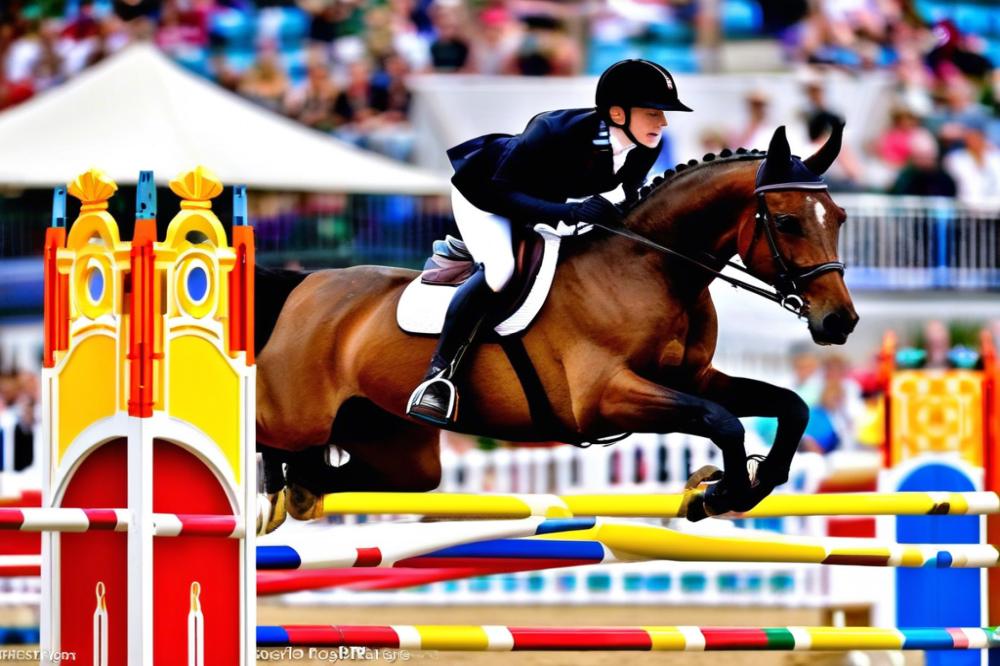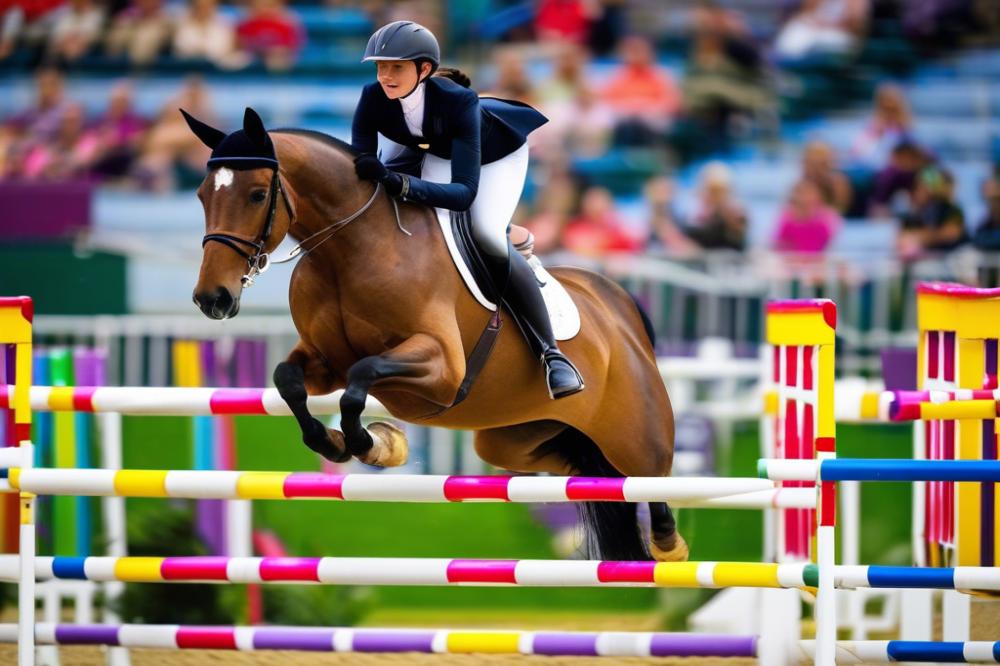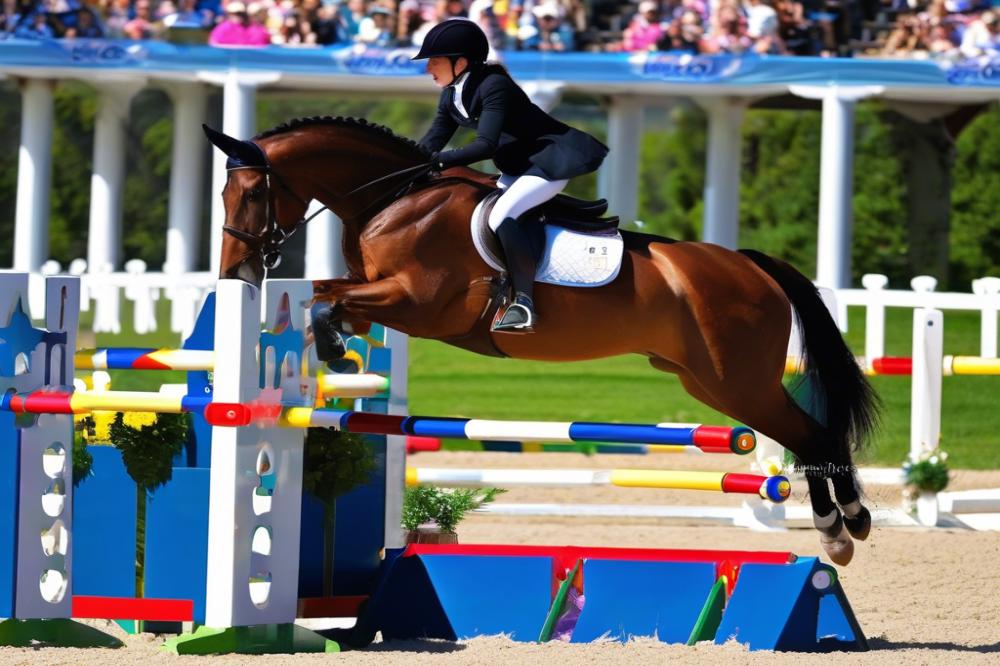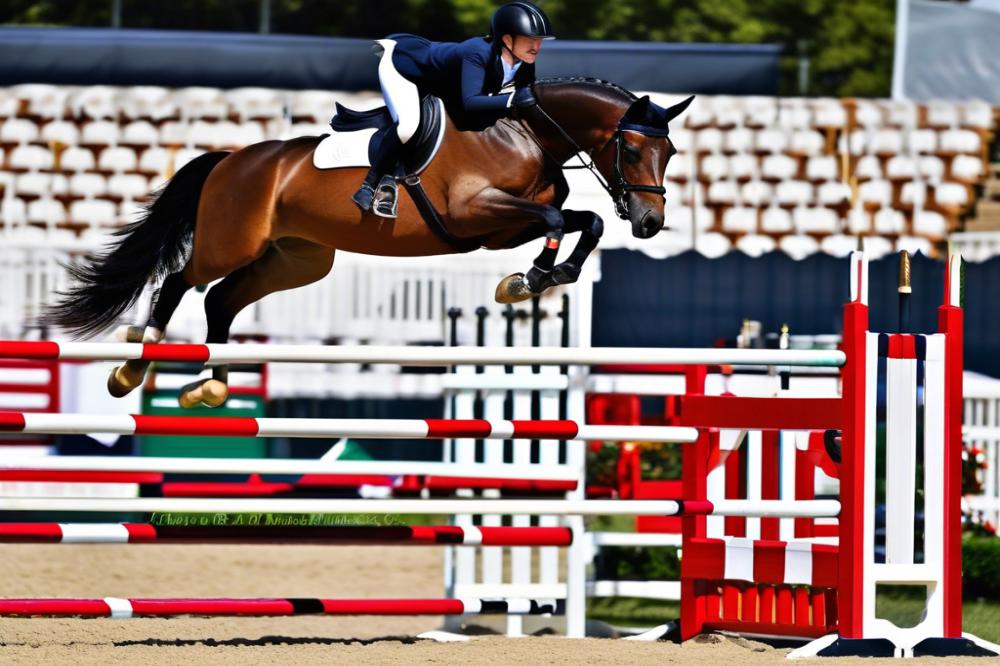Introduction
Warmbloods are a popular choice in the world of horseback riding, especially in the realm of competitive showjumping. These horses are known for their athleticism and temperament. Their physical build allows for impressive performance when jumping over obstacles. Each horse has its own personality, which makes understanding them essential for success.
Knowing the characteristics of warmbloods will significantly enhance a rider’s experience. They usually possess a strong frame, powerful hindquarters, and a calm disposition. Such traits can help a rider navigate the challenges of a course. Riders who take time to learn about these attributes are likely to perform better in competitions. After all, a horse will respond differently in various situations based on its breed-specific tendencies.
The goal of this article is to offer insights into the world of Warmblood riding for showjumping. Readers will find practical tips on training methods, communication techniques, and strategies for competition. By focusing on these areas, riders can build a stronger connection with their horses and, in turn, improve their overall performance in competitive showjumping. Prepare to dive into the essentials needed to excel in this exciting equestrian discipline!
Understanding warmblood characteristics

Overview of Warmblood Breeds Suitable for Showjumping
Warmbloods are a group of horse breeds known for their athletic abilities. Some popular breeds in this category include the Dutch Warmblood, Hanoverian, and Belgian Warmblood. Each breed has its own strengths. Dutch Warmbloods are often favored for their jumping skills and versatility. Hanoverians are well known for their balance and powerful build. Belgian Warmbloods have a strong natural ability for jumping. Selecting the right breed can greatly impact performance in the arena.
Common Traits: Temperament, Physical Attributes, and Athleticism
Temperament plays a significant role in a horse’s suitability for competition. Warmbloods generally exhibit calm and willing dispositions, making them easier to train. Their physical characteristics are equally important. Many of these horses possess strong backs and well-defined musculature. Athleticism is a key factor; they often excel in speed and agility. This combination of traits contributes to their success in showjumping events.
Importance of Breed Selection in Competitive Success
Choosing the right warmblood is essential for any aspiring competitor. A horse’s breed can affect its performance capabilities. Riders should consider factors like stride length and jumping style. Well-bred warmbloods often have a strong foundation in other equestrian disciplines. This versatility can be advantageous when transitioning into showjumping. Understanding each breed’s unique qualities will aid riders in making informed decisions. A good match between rider and horse can lead to great achievements in competitions.
Rider Position and Techniques

Achieving the proper rider position is essential for maintaining balance and control in competitive showjumping. The feet should be placed firmly in the stirrups, allowing for a strong base. Keep your heels down, and weight distributed evenly throughout your body. A straight line should be visible from your shoulder to your hip and down to your heel. This alignment is crucial for effective communication with the horse.
jumping techniques play a vital role in successfully navigating obstacles. The rider must engage in a two-point position right before the jump. This position entails rising slightly out of the saddle, allowing the horse to use its back and jump effectively. Anticipating the jump by looking ahead is also important. Your body should follow the natural motion of the horse to maintain harmony.
Leg aids and seat aids form the foundation of communication with a horse. Riders must use their legs not only for impulsion but also for direction. The inside leg helps establish the horse’s position, while the outside leg can provide support during turns. Similarly, using your seat effectively can signal changes in speed or direction. A subtle shift can lead to a big difference in your horse’s performance.
Common mistakes in rider position often stem from incorrect posture. Slumping in the saddle can disrupt your balance and control. It is also easy to grip the reins too tightly, which can lead to stiffness. Keeping your arms relaxed and your hands steady is critical. Fiddling with the reins often distracts the horse and may cause tension. Riders should aim to maintain light contact with the horse’s mouth, allowing for a more responsive ride.
Training and Fitness Exercises

When it comes to training warmbloods, techniques should cater to their specific needs. These horses often have a powerful build and require methods that enhance their natural abilities. Starting with groundwork is key. Groundwork builds respect and encourages good behavior. Exercises such as desensitization sessions help them become more comfortable under pressure.
Stamina and strength are vital for competitive showjumping. To improve these areas, implement a variety of fitness exercises. Hill work can be very helpful. Trotting or cantering up hills challenges the horse’s muscles and boosts cardiovascular strength. Interval training also plays a significant role. Alternating between faster and slower gaits develops both speed and endurance.
Incorporating poles into training sessions enhances both flexibility and coordination. Horses stride over ground poles and jump poles to sharpen their footwork. This type of exercise prepares them for the obstacles they’ll face in the ring. Additionally, ensuring a good balance of flatwork and jumping practice refines their skills and builds confidence.
Consistency is essential in training. By dedicating time to practice, riders can see substantial improvements in their horse’s performance. Regular conditioning aids in maintaining the horse’s physical health. It is crucial that routine exercises are both interesting and challenging to keep horses mentally engaged. Variety in training keeps both horse and rider excited for their next session.
Overall, focusing on both mental and physical training prepares warmbloods for success in competitions. Each element plays a critical role. From groundwork to fitness exercises, all aspects combine for optimum results. Creating a balanced program is the pathway to becoming a competitive team in showjumping.
Show Jumping Equipment
When it comes to show jumping, having the right equipment is crucial. Riders need specific gear to support their goals. This section covers essential items and the best choices for warmbloods.
Overview of Essential Show Jumping Equipment
Jumping saddles, bridles, and boots serve as the building blocks of show jumping. A well-fitted saddle helps the rider maintain balance. Bridles provide control and communication between horse and rider. Proper boots protect the warmblood’s legs during jumps. These items are not optional; they are necessary for competitive success.
Choosing the Right Saddle and Bridle for Warmbloods
Selecting the correct saddle requires attention to the horse’s back shape and size. Warmbloods often have a more prominent build, so a wider gullet may be necessary. Look for saddles designed specifically for show jumping to enhance performance. The bridle should fit comfortably and allow for effective rein contact. Consider materials that offer a balance between strength and flexibility.
Importance of Fit and Comfort for Performance
The fit of both saddle and bridle impacts how a warmblood performs in the ring. Poorly fitting gear can lead to discomfort, affecting the horse’s attitude. A comfortable horse is more likely to jump well. Regular check-ups are wise to ensure that everything fits correctly as the horse develops. Nothing should be overlooked; even minor adjustments can make a big difference.
Supplements and Gear to Enhance the Warmblood’s Capabilities
Many riders consider supplements to support their horse’s health. Joint supplements, for example, can promote mobility and reduce the risk of injury. Nutrition plays a vital role in maintaining energy levels. Additionally, specialized gear such as fly masks or exercise sheets can help protect against environmental stressors. Keeping the horse at peak condition is essential for competitive success.
Arena Navigation and Competition Strategies
Competing in showjumping requires sharp skills and a clear mind. Understanding the layout of the competition arena can significantly influence your performance. Walk the course carefully before your round. Notice where the jumps are, their heights, and their distances apart. This advance knowledge can be the key to a confident ride.
Reading the course is an essential step that shouldn’t be overlooked. Each jump presents its own challenge. Visualize your approach to each obstacle. Consider the optimal angle to approach each jump. This visualization will help you plan your path and reduce surprises. Mark potential spots to make adjustments if needed. A good plan goes a long way in a competition.
Pacing is another crucial aspect. Manage your time wisely during warm-up and competition. Warm up your horse for about 30 minutes to ensure they are physically and mentally prepared. A well-timed warm-up helps your horse feel confident. Remember to allow for breaks if necessary.
During the round, stay aware of the time. Each rider can feel pressure to complete the course efficiently. Avoid rushing your approach, as this can lead to mistakes. Balance speed and control to maintain composure throughout your ride.
Flexibility is essential when unexpected situations arise. Horses can be unpredictable, and adaptability is key. If a jump does not go as planned, remain calm and adjust your strategy on the fly. Quick decision-making can prevent mistakes from becoming costly errors.
The ability to change your plan based on the horse’s behavior is invaluable. Trust your instincts and experience when navigating challenges. This is what separates good riders from great ones in competitive scenarios.
Performance Tips for Success
Common Performance Pitfalls and How to Avoid Them
Many riders struggle with performance issues during competitions. One common mistake is not warming up properly. A good warm-up can prevent injuries and prepare both horse and rider. Riders may also rush their rounds, leading to mistakes. Take your time and focus on each jump. Another pitfall is failing to read the course correctly. Walk through the course before starting to gain confidence and understanding of the jumps ahead.
Mental Preparation and Visualization Techniques for Riders
Mental preparation is vital for success. Visualization can be a powerful tool. Imagine yourself riding the course perfectly before it begins. Picture each jump in your mind, including how it feels to be in sync with your horse. Breathing exercises can calm nerves and focus the mind. Visualize not just the jumps, but the entire experience of the competition. This practice helps build self-assurance and prepares you for the unexpected.
Developing a Strong Partnership with Your Warmblood
A strong bond with your horse is essential. Spend quality time outside of riding. Grooming and simply being together can enhance trust. Understanding your horse’s temperament plays a significant role in performance. Each horse has unique needs; recognizing those can improve your teamwork. Consistent communication while riding encourages cooperation. Praise and positive reinforcement can make a difference, encouraging your horse to perform better.
The Role of Coaching and Feedback in Improving Performance
Having a knowledgeable coach can enhance your skills. Coaches spot details that riders often miss. They provide feedback that helps address weaknesses. Constructive criticism is vital for growth. Regular lessons keep riders accountable and motivated. Coaches also bring experience to the table, offering strategies specific to different situations. Take advantage of this support to elevate your game.
Final Thoughts on Riding Warmbloods for Showjumping
In summary, handling and riding warmbloods in showjumping requires understanding their specific traits and abilities. Familiarity with warmblood characteristics can improve communication with your horse. Proper techniques for jumping play a critical role in achieving success. Skill is important, but so is developing a strong bond with your mount.
Continuous learning is essential in this sport. Many experienced riders still seek new information and techniques. Whether through lessons, clinics, or self-study, there’s always room for improvement. Taking time to practice different exercises will strengthen your skills. Each ride presents an opportunity to refine your approach and enhance the partnership between horse and rider.
Ultimately, success in competitive showjumping does not come overnight. It is a journey filled with challenges and triumphs. Every rider faces ups and downs, but persistence pays off. With dedication and a willingness to learn, riders can achieve their goals. Keep pushing forward and celebrating each little victory along the way.



